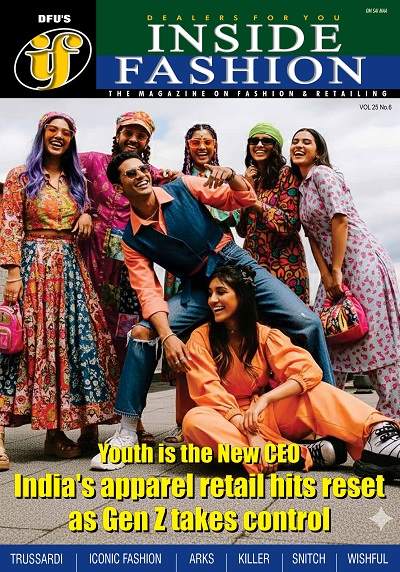Beyond Diwali: The wedding calendar that’s redefining India’s retail demand curve

24 November 2025, Mumbai
For decades, India’s consumption curve has moved to a predictable rhythm: Diwali delivered the sales peak, and the months that followed settled into a familiar lull. Not anymore. In a year defined by unpredictable macro shocks and global demand volatility, India’s consumer economy has rewritten its own seasonality. What was once a post-festive cool-down has morphed into a second, equally powerful consumption wave, led by the country’s sprawling, culturally entrenched wedding season.
This shift is no coincidence. A mix of policy tailwinds, benign inflation, and a historically dense calendar of auspicious wedding dates has turned winter into India’s new retail summer. And at the heart of this momentum lies a sector that thrives on aspiration, craftsmanship, and cultural identity: fashion and apparel.
Weddings fill the festive gap
It is not unusual for consumer categories from jewelery to appliances to feel a bump during the wedding months. What is unusual is the scale and persistence of this growth. From November through May, India hosts one of the world’s largest wedding cycles, with millions of ceremonies conducted across strata, cities, and spending brackets. Traditional Hindu auspicious dates, long known to create periodic demand spikes, have aligned exceptionally favorably this year, producing a sustained consumption window that retailers say now outperforms even Diwali in some categories.
Table: The wedding economy
|
Segment |
Estimated market value/contribution |
Growth rate/trend |
Apparel sector data |
|
Overall Wedding Industry (Annual) |
$130 bn (Rs 10.8 lakh crore) |
20-25% (Annual Growth Rate) |
Contributes 30-40% of Annual Sales for leading ethnic wear brands. |
|
Projected Wedding Spending (Nov-Dec) |
Ra 6.5 lakh crore (Nov 1 - Dec 14) |
Expected business increase of at least 10% over the previous season. |
GST Hike Impact: Apparel >$2,500 now at 18% GST (up from 12%), but premium buyers remain price-inelastic. |
|
Ethnic/Occasion Wear Market (Annual) |
$115 bn (2025 projected) |
6.97% CAGR (projected to 2033) |
Indo-Western Fusion Wear is a key driver, growing at ≈ 8.1% CAGR. |
Sources: CAIT, IBEF, Industry Reports (Data collated and synthesized)
According to industry estimates, India’s annual wedding economy has now crossed Rs 10.8 lakh crore ($130 billion), growing at 20-25 per cent year-on-year. From this, almost 30-40 per cent of annual sales for leading ethnic-wear brands are derived solely from wedding-related purchases. Even more striking is the short-term spike: spending during just the November-December window is projected at Rs 6.5 lakh crore, with an expected 10 per cent increase over last year. Simply put: weddings have become the single most reliable and inflation-resistant driver of discretionary consumption in India.
Why apparel is the unshakeable anchor of the wedding boom
The big, fat Indian wedding is not merely a cultural spectacle it is an ecosystem. And its most visible and resilient pillar is apparel. Across metros and Tier II cities alike, the demand curve for occasion wear is no longer dominated solely by bridal outfits. Today, families outfit entire entourages grooms, siblings, cousins, extended relatives, and, in many cases, multiple events across multiple days. This multiplication effect has turned apparel into the single fastest-growing category within the wedding economy.
Premium remains untouched by tax hikes While the GST slab for apparel above Rs 2,500 has increased from 12 to 18 per cent, the premium segment has barely felt a tremor. Ethnic wear retailers under Aditya Birla Fashion, among others, note that their core wedding clientele is strongly design-led, brand-focused, and relatively price-inelastic. The desire for uniqueness, not bargains drives their wedding shopping.
Men’s celebration wear Is India’s new luxury frontier
Once considered a secondary category, men’s ethnic wear has become a powerhouse. Vedant Fashions, the parent of Manyavar, has reported strong momentum as sherwanis, Indo-Western suits, bandhgalas, and custom accessories become central to the modern groom’s identity. The company’s high-margin celebration wear portfolio has turned into a structural growth engine, reflecting how men’s fashion is finally claiming its economic space in the wedding market.
However, for India’s urban youth, the wedding wardrobe is increasingly defined by versatility. Fusion wear, brocade gowns, draped saris with engineered blouses, crop-top lehengas, tailored bandi jackets has become the fastest-growing trend. Projected at 8.1 per cent CAGR, this segment offers fashion brands a product that satisfies both tradition and global aesthetics, contributing significantly to the broader $115 billion ethnic and occasion wear market projected for 2025.
How brands are predicting demand
Behind the scenes, India’s apparel giants are re-engineering their forecasting playbooks. It is no longer enough to look at past festive sales. Today, brands are tracking wedding hall bookings, marriage registry data, climatic cues, and GST-sensitive price bands to shape their inventory strategy months in advance.
Auspicious dates as demand algorithms
Companies such as Raymond Lifestyle and leading ethnic wear retailers now use the volume of advance banquet hall bookings as a core forecasting metric. These signals help determine:
• which months require heavier stocking of silks, velvets, and embellished fabrics
• how much stitched inventory versus fabric-based offerings to carry
• when to push out premium bridal and groom wear lines
In a year with an unusually high number of auspicious dates retailers moved aggressively to build inventory early, ensuring deep assortments across pricing tiers.
Table: Tracking the wedding & climate schedule
|
Seasonal indicator |
Brand action/prediction |
Impact on apparel inventory management |
|
Auspicious Dates & Hall Bookings |
Predicts peak demand months (Nov-May) and overall wedding volume. |
Triggers Advance Inventory Building for high-value bridal and occasion wear fabrics and pre-stitched ensembles (e.g., silks, velvets). |
|
Early Onset of Winter |
Flagged by retailers like V-Mart, noting an early 'chill factor.' |
Accelerates the Push-out of Winter Lines (jackets, shawls, velvet ensembles) to maintain sales momentum and leverage weather-driven demand. |
|
GST Policy Signal |
Anticipates consumer price sensitivity in the mid-premium segment (₹1,000−₹2,500). |
Focuses design efforts on maintaining quality and price points below the ₹2,500 GST threshold for the mass-market guest wear segment. |
Climate as a commercial trigger
When retailers like V-Mart observed an early winter onset in northern markets, the impact was immediate: faster rollouts of velvet ensembles, shawls, jackets, and layered ethnic silhouettes. This ensured continuity of post-Diwali demand and kept stores from experiencing the typical seasonal dip.
GST-calibrated design strategy
For the mass mid-premium segment Rs 1,000-Rs 2,500 brands have consciously engineered silhouettes, embroideries, and fabrics to keep final prices under the Rs 2,500 threshold. This preserves affordability while avoiding any demand shock in the highly price-sensitive guest-wear segment. This meticulous, multi-signal forecasting system has transformed wedding demand from a seasonal opportunity into a structural pillar of the industry.
The convergence of cultural and macroeconomic tailwinds has created a phenomenon retailers once thought impossible: a six-month wedding-winter economy that sustains momentum from November to May. In effect, it eliminates the traditional soft quarters that plagued the apparel sector for years. Diwali may still be the emotional peak of shopping, but weddings are increasingly the economic one.
And the implications are profound as it means higher inventory turnover for apparel manufacturers; better cash flows for retailers; stronger footfall across Tier II and III cities; greater resilience against global volatility.
Thus, India’s wedding season has become more than an event it is a consumption engine. And as long as cultural traditions and rising incomes continue to intersect, the apparel sector will remain its biggest beneficiary.
The rulebook has changed. Demand no longer ends with Diwali. In India’s new consumption calendar, the wedding is the festival and it keeps the economy dressed, decorated, and decisively booming.











